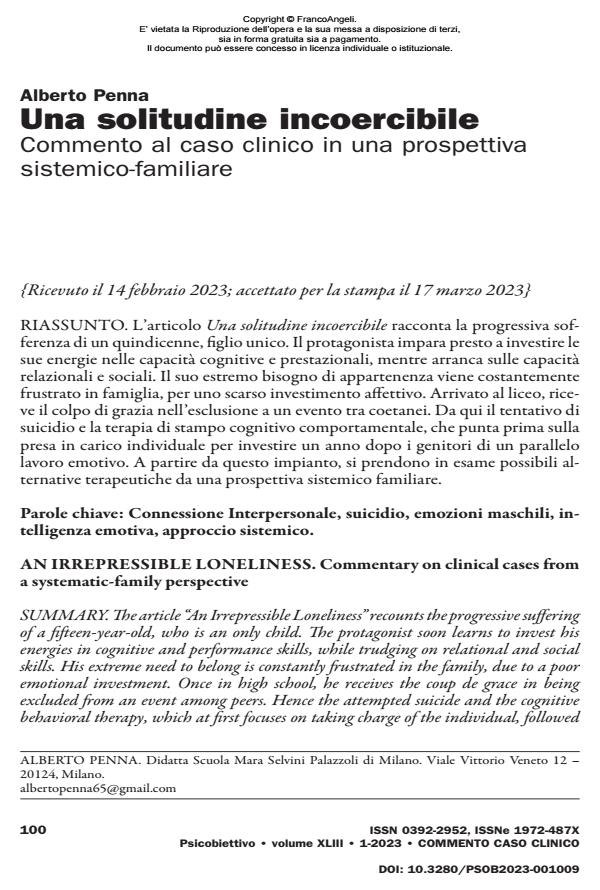An irrepressible loneliness. Commentary on clinical cases from a systematic-family perspective
Journal title PSICOBIETTIVO
Author/s Alberto Penna
Publishing Year 2023 Issue 2023/1
Language Italian Pages 5 P. 100-104 File size 600 KB
DOI 10.3280/PSOB2023-001009
DOI is like a bar code for intellectual property: to have more infomation
click here
Below, you can see the article first page
If you want to buy this article in PDF format, you can do it, following the instructions to buy download credits

FrancoAngeli is member of Publishers International Linking Association, Inc (PILA), a not-for-profit association which run the CrossRef service enabling links to and from online scholarly content.
The article "An Irrepressible Loneliness" recounts the progressive suffering of a fifteen-year-old, who is an only child. The protagonist soon learns to invest his energies in cognitive and performance skills, while trudging on relational and social skills. His extreme need to belong is constantly frustrated in the family, due to a poor emotional investment. Once in high school, he receives the coup de grace in being excluded from an event among peers. Hence the attempted suicide and the cognitive behavioral therapy, which at first focuses on taking charge of the individual, followed by the parents a year later in parallel emotional work. Starting from this framework, possible therapeutic alternatives are examined within a family systemic perspective.
Keywords: Interpersonal Connection, suicide, male emotions, emotional intelligence, systemic approach.
Alberto Penna, Una solitudine incoercibile Commento al caso clinico in una prospettiva sistemico-familiare in "PSICOBIETTIVO" 1/2023, pp 100-104, DOI: 10.3280/PSOB2023-001009